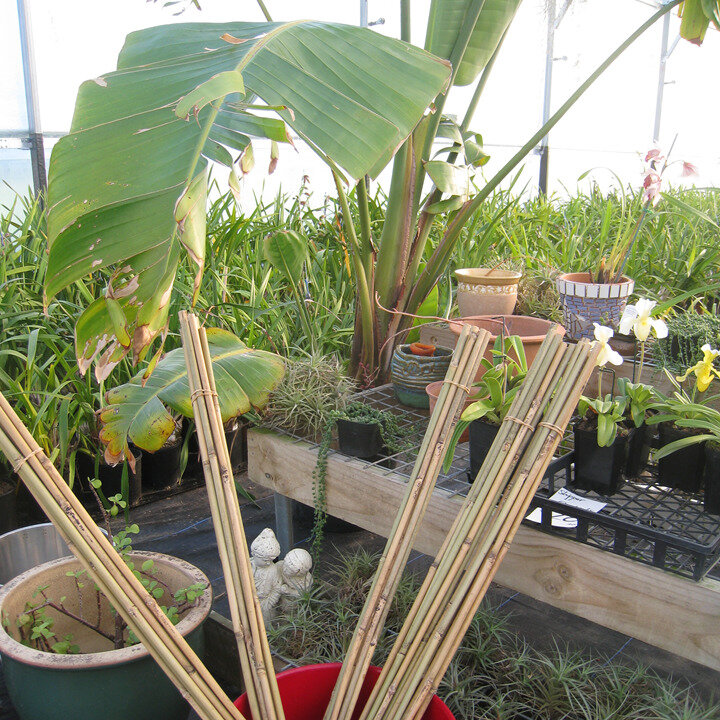Choose the Right Bamboo Orchid Stakes for Healthy Blooms
An orchid’s graceful arch and vivid blooms depend on more than water and fertilizer— the humble stake silently shapes every flower spike. Selecting the right bamboo orchid stakes affects airflow around leaves, prevents stem kinks, and keeps delicate blossoms on full display. Whether you manage a boutique greenhouse, run a landscape crew, or nurture a sunny windowsill collection, a few evidence‑based guidelines simplify the choice. Throughout this guide, you’ll also see how Wellco Wholesale’s factory‑direct catalog of garden supplies streamlines bulk sourcing for trade buyers while giving hobbyists a trustworthy benchmark for quality.

Why Bamboo Orchid Stakes Matter for Plant Health
Support & Airflow Benefits
A controlled study by the University of Florida’s Environmental Horticulture department found that properly staked Phalaenopsis spikes received 18 % more uniform light across flower nodes compared with unstaked controls, translating to fuller racemes and longer bloom retention. Vertical support keeps foliage spaced, boosting circulation and reducing humidity pockets where Botrytis can thrive.
Preventing Stem Damage & Pests
“Every bruise is an invitation to disease,” notes certified horticulturist Elena Paré. Rough or oversized stakes can crush the cambium, leaving entry points for Fusarium wilt. Smooth, tempered bamboo—lightly sanded at manufacturing—protects tissues while still providing the tensile strength orchids need during transport and display.
Key Selection Criteria for Bamboo Orchid Stakes
Diameter & Length Guidelines by Orchid Type
| Orchid Type | Recommended Diameter | Typical Length |
|---|---|---|
| Mini (e.g., Mini‑Phal) | 2 mm | 25 cm |
| Standard Phalaenopsis | 3‑4 mm | 40‑60 cm |
| Cattleya & Oncidium | 5 mm | 60‑70 cm |
| Vanda & Cymbidium | 6‑8 mm | 70‑90 cm |
Match thickness to the final spike weight; oversizing stresses ties, while undersizing leads to “banana” bends.
Grade & Moisture Resistance
Kiln‑dried stakes lose up to 12 % more internal moisture than air‑dried stock, making them less prone to mold in high‑humidity grow rooms. Look for vacuum heat‑treated options if you are shipping internationally—many customs agencies waive fumigation fees on such material.
Sustainability & Sourcing Certifications
Demand for eco‑labels is surging. The Rainforest Alliance reports a 32 % year‑on‑year increase in FSC‑certified bamboo purchases by U.S. nurseries. Displaying certification logos on retail packs can justify a modest price premium while aligning with greenhouse gas ESG goals.
Comparing Bamboo vs. Alternative Materials
Bamboo vs. Plastic: Eco Impact Stats
Bio‑based bamboo decomposes naturally within two seasons in compost conditions, while polypropylene stakes persist for centuries. A cradle‑to‑grave life‑cycle analysis by GreenDelta showed bamboo’s carbon footprint to be 55 % lower than similar‑diameter plastic rods when shipping distances were equal.
Bamboo vs. Metal: Cost & Aesthetic Case Study
A 50‑acre subtropical orchid farm in South Texas switched from galvanized wire hangers to dyed‑green bamboo to reduce labor cuts and heat conduction. Over 12 months, the farm saved $0.08 per plant in replacement and cooling costs, while post‑purchase surveys revealed customers rated the display “more natural” by a factor of 4 : 1.
Practical Tips for Bulk Buyers and DIY Gardeners
Buying in Wholesale Lots
Stakes bundle best in 500‑piece sleeves. For landscapers, Wellco Wholesale’s mixed‑carton program lets you combine diameters to hit pallet minimums, trimming freight 15‑20 % versus single‑size loads.
Storage & Shelf‑Life Best Practices
-
Store cartons on pallets, 10 cm off concrete floors.
-
Maintain 45‑65 % relative humidity; rotate stock first‑in/first‑out.
-
Slip a desiccant packet into the open sleeves to deter surface mildew.
Customization & Branding Options
Dyed stakes (green, mocha, or black) disappear visually in displays, while heat‑stamped logos or UPC codes help retail partners with inventory control. Wellco’s on‑line color bath meets California Prop 65 standards for heavy‑metal limits.
Installation & Maintenance Guide
Proper Staking Techniques Step‑by‑Step
-
Insert the stake at a 30‑degree angle away from the emerging spike base before buds set.
-
Secure with soft vinyl clips every 6‑8 cm, never tighter than light finger pressure.
-
Adjust tie points upward as the spike elongates; never force a set curve—let the plant lean naturally.
Periodic Inspection & Replacement Schedule
Inspect monthly: discard stakes showing deep splits, black mold, or >5 mm splintering. Eco‑dispose by shredding and blending into bark potting mixes, which boosts aeration.
Conclusion
Choosing high‑quality bamboo stakes by diameter, treatment, and certification keeps orchids upright, disease‑free, and visually stunning—whether on a retail bench or your living‑room sill. Ready to refine your staking program or compare wholesale bundles? Reach out to Wellco Wholesale for specification sheets or a no‑obligation bulk quote today.
Frequently Asked Questions
Q1: How long do kiln‑dried bamboo stakes last in a humid greenhouse?
With proper storage, they typically remain mold‑free and structurally sound for 18–24 months before fiber softening begins.
Q2: Can I reuse stakes after one bloom cycle?
Yes—sanitize in a 1:9 bleach solution for 10 minutes, rinse, and dry thoroughly. Discard if there are deep cracks or frayed ends that might injure spikes.
Q3: Do colored stakes bleed onto flowers or leaves?
Professional dyes are absorbed under heat; leaching is negligible when stakes are not water‑soaked. Avoid spray‑painted DIY versions that can flake.
Q4: What is the minimum order quantity for mixed diameters at Wellco Wholesale?
Most customers start at one standard pallet, but smaller trial cartons are available for independent garden centers.
Q5: Are bamboo stakes safe for outdoor orchid species exposed to rain?
Yes—rain accelerates natural aging yet seldom compromises strength within the first season; replace annually in high‑rainfall climates.

